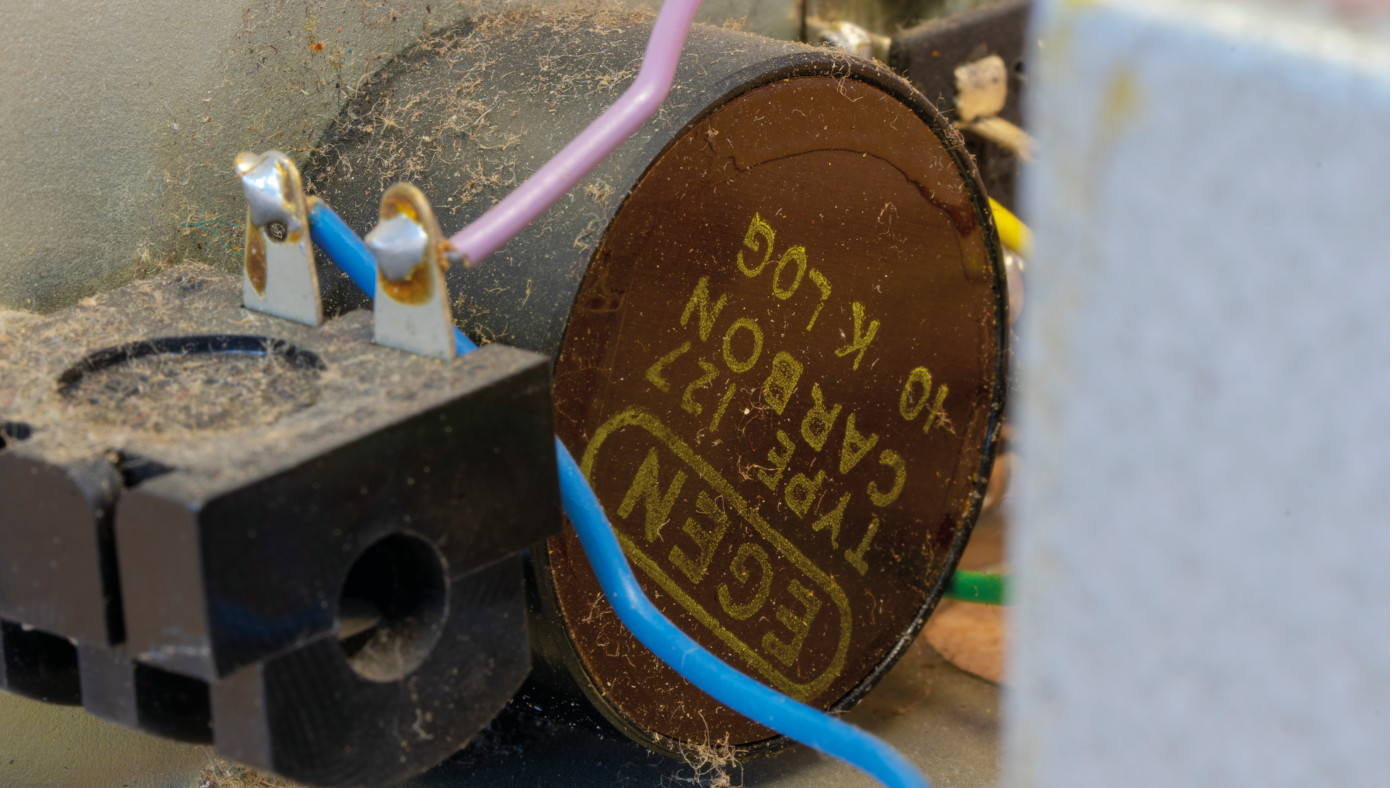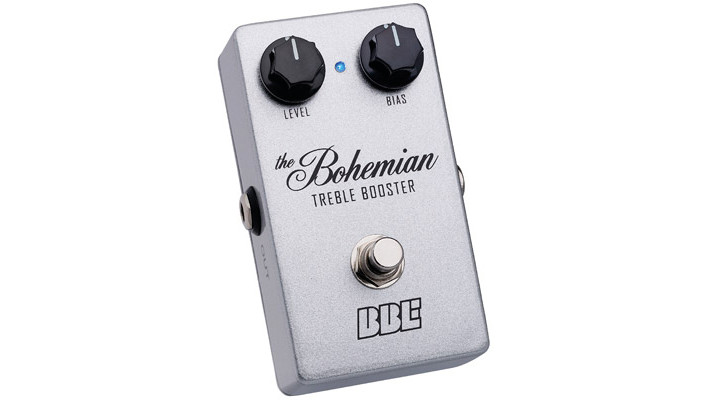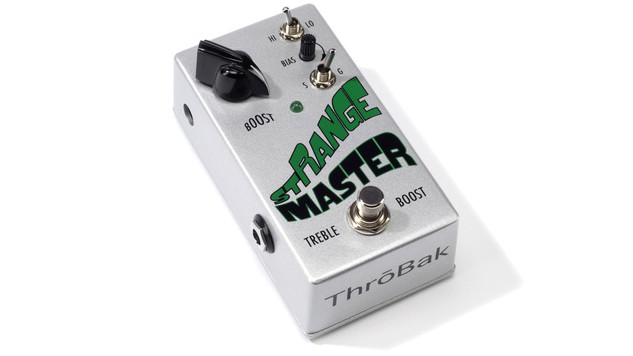Classic gear: Dallas Rangemaster - the secret sauce behind Rory Gallagher, Tony Iommi and Marc Bolan's signature tones
How this humble unit helped guitar’s greatest achieve their iconic tones...

Rory Gallagher, Tony Iommi and Marc Bolan are just a few of the numerous household-name rock guitarists known to have embraced the Dallas Rangemaster in order to achieve their signature sound.
Introduced to the burgeoning guitar effects market of the mid-60s as a ‘treble booster’ by London’s Dallas Musical Ltd, it was originally aimed at those looking to solve the perceived problem of ‘dark-sounding’ British amps.
The simple yet highly effective circuit works in tandem with the amp, driving its front-end and shaping the EQ
“In those days, most of the English brands like Selmer, Watkins, Vox and Marshall weren’t very detailed-sounding amplifiers,” recalls Roger Mayer, Jimi Hendrix’s ‘secret weapon’ of the studio. “By comparison, Fender amps tend to have a lot more treble in the circuit and sound more detailed and are therefore much more versatile. One of the secrets of getting a good guitar sound is to use equalisation before the signal hits the front-end of the amplifier. And it’s about how hard you push the first tube. I used to use my own EQ circuit designs in the studio all the time with Jimi to achieve that. In other words, we wanted a different EQ curve to make the first 12AX7 [preamp valve] fold up differently.”

Designed to sit atop the amplifier and be operated by hand, the Rangemaster can be more accurately described as an effects ‘unit’, rather than a pedal. It features a hard-wired output cable that plugs directly into the amplifier and an input socket on its control face. The device’s bias resistors create a relatively low-input impedance that interacts with the guitar’s pickup(s) to produce a more mid-focused sound
By the same principle, the Dallas Rangemaster’s simple yet highly effective circuit works in tandem with the amp, driving its front-end and shaping the EQ while adding a unique grittiness to the signal, as Dan Coggins, circuit designer of Lovetone and ThorpyFX pedals, explains: “When you hit the guitar, the [germanium] transistor starts to growl. It clips more gently than a silicon transistor would, and when it spits, it does so in quite a smooth way. It clips asymmetrically, so the top half of the signal is squashing and the bottom half is cutting off abruptly, but the magic really happens when you drive that slightly compressed, gritty signal into the first valve of the amp.
You're getting serial clipping: from the Rangemaster on one lot of peaks and then from the valve on the other lot of peaks
“When the signal wallops that first [12AX7] triode valve,” Dan continues, “it clips in the opposite direction, so you then get a smoother clip on each side of the waveform. You’re getting serial clipping: from the Rangemaster on one lot of peaks and then from the valve on the other lot of peaks. That produces a fairly smooth distortion that you can then turn up on the volume control to push the rest of the amp.”


“There are two vital components: the germanium transistor and the input capacitor,” Adrian Thorpe, founder of ThorpyFX, tells us. “The transistor is there to boost the signal and, typically, it’s a Mullard OC44. It’s that grit and dirt you get from the OC44 that makes the effect sound as cool as it is - it adds a certain texture. The input capacitor typically measures 5nF and acts as a single pole high-pass filter. It doesn’t cut off all the frequencies, rather it accentuates the higher frequencies; when you play higher register notes the gain increases. It is a treble booster, but it’s cleverer than that because it doesn’t cut out the bass frequencies - it only boosts those frequencies that are into the upper-mids and the lower treble range.”
Indeed, it seems ‘treble booster’ may be something of a misnomer as far as the Rangemaster is concerned.
Want all the hottest music and gear news, reviews, deals, features and more, direct to your inbox? Sign up here.
“The name’s wrong!” agrees Adrian. “More accurately, the terminology should be ‘frequency dependent booster’. It actually boosts treble and mids.”
'Board-friendly boosters inspired by the Rangemaster

Analog Man Beano Boost
The Beano Boost is inspired by Clapton’s exemplary ‘Beano’ album ’Burst tone gleaned from a cranked Marshall model 1962. Much like the original unit, this pedal is point-to-point hand- wired and features an NOS germanium transistor. In addition to boost level control, a three-way switch enables further tone sculpting.

BBE Bohemian Treble Booster
With wider component tolerances than today’s high-spec pedals, original Rangemasters can be inconsistent sounding - transistor values and bias often differ, unit to unit, resulting in a variety of desirable, albeit fixed, tones. This Brian May-inspired pedal has a useful bias control, dialling in an array of authentic sounds.

ThroBak Strange Master
With a nod to Sabbath’s Master Of Reality, the Strange Master is a bells and whistles booster sporting hand-tested germanium and higher- gain silicon transistors. It can often prove tricky to get that elusive ‘treble boost’ sound working correctly, but this covers all angles with a transistor switching option in addition to ‘Hi/Lo’ range selection and bias control.
We would like to thank Roger Mayer, Dan Coggins and Adrian Thorpe.
Rod Brakes is a music journalist with an expertise in guitars. Having spent many years at the coalface as a guitar dealer and tech, Rod's more recent work as a writer covering artists, industry pros and gear includes contributions for leading publications and websites such as Guitarist, Total Guitar, Guitar World, Guitar Player and MusicRadar in addition to specialist music books, blogs and social media. He is also a lifelong musician.


